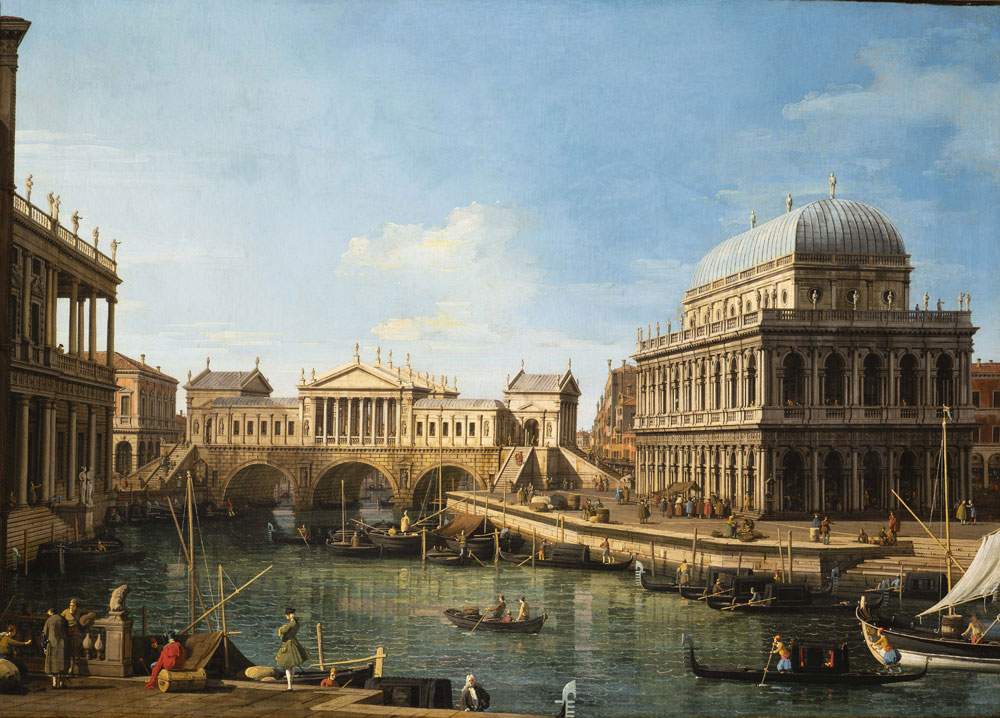The Civic Museums of Bassano del Grappa welcome until October 10, 2021 the exhibition Palladio, Bassano and the Bridge. Invention, History, Myth, which aims to celebrate the completion of the long restoration of the Ponte Vecchio also known as the Ponte degli Alpini.
Curated by Guido Beltramini, Barbara Guidi, Fabrizio Magani, and Vincenzo Tiné and promoted by the Municipal Administration of Bassano del Grappa, the exhibition aims to retrace the history of this monument that has become a symbol of Bassano. “A narrative through images,” says Barbara Guidi, scientific director of the Civic Museums, “which unfolds through works, objects and documents that, duly ordered and put in relation to each other, allow us to retrace the salient phases of the history of the architectural artifact, highlighting its peculiarities and relating it to the historical, social and economic events of the city.”
The figure of architect Andrea Palladio ideally guides a narrative divided into three macro-sections, namely Invention, History and Myth, to offer visitors three different perspectives through which to read the Bridge. The first one is dedicated to the intellectual and constructive activity of the famous architect, presenting the novelties in the research on Palladio and his bridges: stone bridges, wooden bridges, with particular attention to the Bassano and Cismon bridges over the Grappa, and paper bridges, handed down by the Quattro Libri.
Unlike most 16th-century architects, Andrea Palladio was in fact an architect of bridges. Those of paper had a significant impact on the figurative culture of the following centuries: published in the Quattro Libri, a treatise published in Venice in 1570, they became the target of eighteenth-century artists. Algarotti, for example, asked Canaletto to show him the Rialto Bridge as Palladio had conceived it, and so did Bellotto, Carlevarijs, and Piranesi introduce bridges in their views. The Bassano Bridge was designed by Palladio, was destroyed and rebuilt several times by the 18th century. On display are original drawings by Palladio, sixteenth-century books, ancient maps, eighteenth-century paintings, mid-nineteenth-century photographs and contemporary study models.
The second section, which is more historically oriented, focuses instead on the construction of the bridge within the economic, cultural and social context of Bassano, from its construction to the transformations it underwent in the eighteenth, nineteenth and twentieth centuries.
The exhibition concludes with the last section, which aims to open a glimpse into a real and imaginary universe, namely that of the paintings of Canaletto, Bellotto, Carlevarijs, Piranesi and Guardi: through their views, these artists fueled the spread of the myth of Palladio in the modern world.
The exhibition was made possible by a collaboration between the Bassano Civic Museums, the Soprintendeza Archeologia Belle Arti e Paesaggio for the provinces of Verona, Rovigo and Vicenza, and the Centro Studi Internazionali di Architettura Andrea Palladio in Vicenza.
For more info: www.museibassano.it
Hours: Daily from 10 a.m. to 7 p.m. Closed Tuesdays.
Tickets: Full 7 euros, reduced 5 euros. Free for children under 10 years.
Image: Antonio Canaletto, Capriccio con edifici palladiani (c. 1750; oil on canvas; Parma, Complesso monumentale della Pilotta)
 |
| Palladio architect of bridges: the restoration of the Ponte degli Alpini bridge is celebrated in Bassano del Grappa |
Warning: the translation into English of the original Italian article was created using automatic tools. We undertake to review all articles, but we do not guarantee the total absence of inaccuracies in the translation due to the program. You can find the original by clicking on the ITA button. If you find any mistake,please contact us.